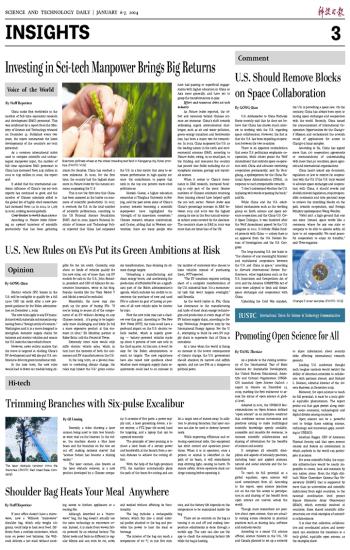
As a prelude to the closing ceremony of the International Year of Basic Sciences for Sustainable Development, the United Nations Educational, Scientific and Cultural Organization (UNESCO) launched Open Science Outlook 1 report in Geneva on December 14, 2023, marking the first endeavour to assess the status of open science at global level.
Adopted in 2021, the UNESCO Recommendation on Open Science defined "open science" as an inclusive construct that combines various movements and practices aiming to make multilingual scientific knowledge openly available, accessible and reusable for everyone, to increase scientific collaborations and sharing of information for the benefits of science and society.
It comprises all scientific disciplines and aspects of scholarly practices, including basic and applied sciences, natural and social sciences and the humanities.
To reach its full potential as a global equalizer, open science will need commitment from all. According to the report, open science practices are on the rise but access to participation in and sharing of the benefit from open science are uneven across the world.
Though most researchers are positive about open science, they are actually coming across obstacles in practical practices such as sharing data, software and methods results.
According to a senior U.S. science official, science funders in the U.S., UK and Canada planned to set up a network to share information about security risks affecting international research projects.
Leading U.S. academics thought such tougher controls would restrict the ability of American scientists to collaborate with partners abroad, said Richard L. Hudson, editorial director of the Science Business, in December 2023.
Moreover, for open science to reach its full potential, it must be a truly global equitable phenomenon. The report points out that gaps persist along existing socio-economic, technological and digital divides among countries.
Open science can be a powerful tool to bridge these existing science, technology and innovation gaps, according to UNESCO.
Jonathan Bagger, CEO of American Physical Society, said that open science creates and fosters an environment in which anybody in the world can participate in science.
For some scientific fields, the requisite infrastructure would be nearly impossible to create, host and maintain by one nation alone. From the High-Altitude Water Cherenkov Gamma-Ray Observatory (HAWC) that is supported by more than 30 universities and scientific institutions from eight countries, to the national-coordination level project Square Kilometre Array Observatory (SKAO), which currently involved 16 countries, these shared scientific infrastructures are vivid examples of scientific collaborations.
It is clear that collective, collaborative and coordinated action and investment can accelerate the transition to a truly global, equitable open science, as the examples show.


 Next
Next




